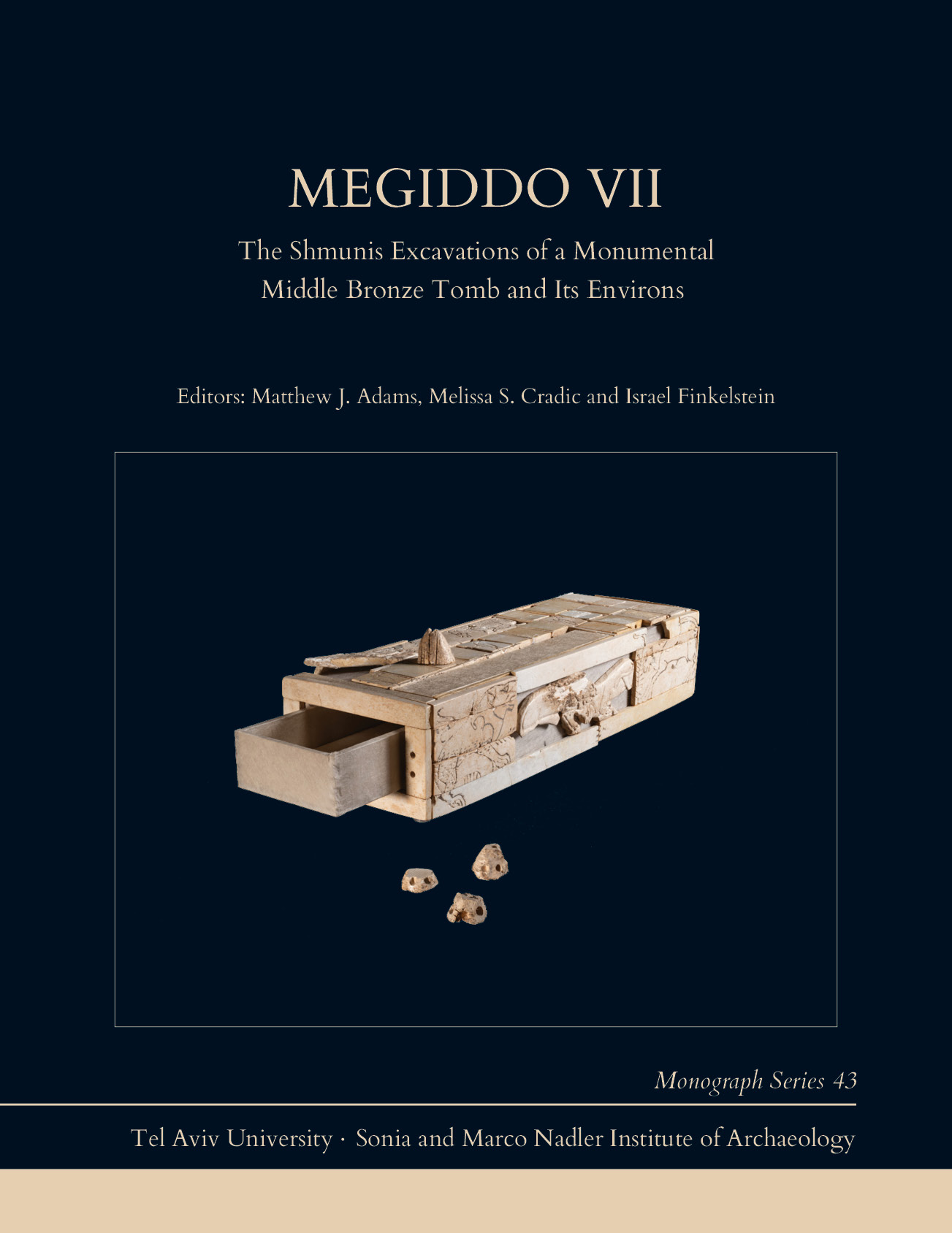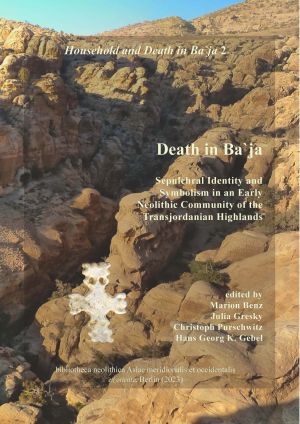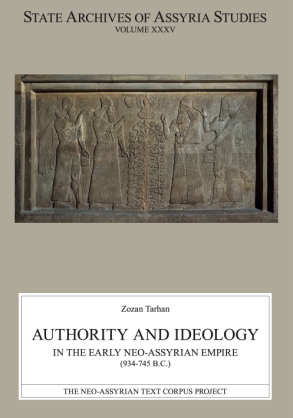New on Our Shelves

Megiddo VII : the Shmunis excavations of a monumental Middle Bronze tomb and its environs
Matthew J. Adams, Melissa S. Cradic, Israel Finkelstein (Eds.)
2025
Megiddo VII is the fifth publication in Tel Aviv University’s Megiddo Expedition Series, which meticulously reports and analyzes the archaeological findings from Tel Megiddo. This volume departs from its predecessors by concentrating on two significant, exceptionally preserved and richly furnished interrelated tombs excavated in 2016: Tomb 16/H/50—a monumental masonry-constructed chamber tomb from the Middle Bronze III, and Burial 16/H/45, a simpler pit burial within the former’s mausoleum, from the Late Bronze I.The unusually pristine conditions of the tombs afforded a unique opportunity for scrupulous excavation and indepth study. Presented here in 24 chapters, this report is exceptional in deploying an arsenal of archaeological science methods on a targeted area of the mound. It chronicles the architectural and artefactual finds and positions them within their broader temporal, spatial, and cultural contexts, offering fresh insights into the funerary practices and societal structures of their respective periods.Directed by experts from Tel Aviv University and supported by an international consortium of institutions, the excavation employs cutting-edge excavation, documentation and analytical methods to capture, preserve and study archaeological data. This volume is indispensable for researchers in the fields of Near Eastern archaeology and archaeological science, and for those interested in the complexities of ancient funerary practices

Hellenistic Nysa-Scythopolis : stratigraphy and architecture
Gabriel Mazor and Debora Sandhaus; Walid Atrash (Eds.)
2025
This is the fifth volume of publications of the Bet She’an Archaeological Project, describing the large-scale IAA excavations at the site of Bet She’an–ancient Nysa-Scythopolis, during 1986–2002. Bet She’an V: Hellenistic Nysa-Scythopolis is the second volume presenting the full excavation report of the IAA excavations at Tel Iẓṭabba, conducted between 1991 and 1994. The first volume in this series, Bet She’an IV (IAA Reports 62), focused on two corpora of finds: stamped amphora handles and sealings. The current volume, Bet She’an V, is comprised of two parts (IAA Reports 74/1, 74/2) dedicated to the stratigraphy, architecture and finds from the Hellenistic period. Part 1 provides a brief summary of excavations at Tel Iẓṭabba and an overview of the city’s history, the stratigraphy of various excavated areas and architectural descriptions and analyses. Part 2 describes the small finds, including a comprehensive analysis of the pottery, as well as the figurines, coins, weights and miscellaneous artifacts. Remains from the Early Bronze Age III are presented in Appendix 1.

Khirbet el-'Aqd: A Hellenistic-Roman Stronghold in Western Judea
Moshe Fischer, Oren Tal
2025
This book contains the final report of the excavations of Khirbetel-ʿAqd, in the eastern part of Canada Park (between Latrun and Shaʿar HaGuy), conducted by Tel Aviv University in 1978–1980 and 1983. These excavations, led by Professors Mordechai Gichon and Moshe (Ladislav) Fischer, revealed a Hellenistic-period and a Roman-period stronghold and subterranean complexes. Along with the Roman bathhouse of Emmausand the way-station of Ḥorvat Meṣad on the Roman road from Jaffa to Jerusalem, Khirbet el-ʿAqd formed part of a broader regional project that focused on Roman roads and associated sites in the western Judean Hills. The excavations of Khirbet el-ʿAqd, a fortified hill that rises above its surroundings, focused mainly on the southern fortification line and the gatehouse complex in its center, as well as on the subterranean complex to its west. The results of the excavations and their findings indicate the presence of several periods of settlement from the Iron Age to the Ottoman period, but the most significant occupations relate to the 2nd century BCE and to the days of the Bar Kokhba Revolt. Fischer suggested identifying the Hellenistic stronghold at Emmaus, Bacchides,the Seleukid general of Demetrius I had fortified in order to block routes to Jerusalem (161/60 BCE), as described in 1 Maccabees (9:50) and by Josephus (Antiquities XIII.15–16). This identification is accepted by some other scholars as well. The fate of Khirbet el-ʿAqd during the Great Revolt (66–70 CE) is unclear, but its area played an active role in the Roman army consolidation of the western Judean hills, as noted by Josephus (War IV.443–445). This consolidation may have continued during the Bar-Kokhba Revolt. Coins found at the site indicate that it served as a stronghold for the rebels there in the third or fourth year of the revolt (if not earlier) and was contemporaneous with Herodium. Moshe Fischer’s untimely passing in 2021 left some of his archaeological excavation and survey projects unpublished, and several of his former students and colleagues have taken upon themselves the task of bringing them to fruition. The publication of the final report of Khirbet el-ʿAqdby Oren Tal, Professor of Classical Archaeology at Tel Aviv University, fulfils part of that legacy.

Death in Ba'ja: Sepulchral Identity and Symbolism in an Early Neolithic Community of the Transjordanian Highlands
Marion Benz, Julia Gresky, Christoph Purschwitz, Hans Georg K. Gebel (Eds.)
2024
Das Buch Death in Ba`ja präsentiert erstmals umfassend die Grabbefunde der 9000 Jahre alten Siedlung von Ba`ja in Südjordanien. Es ist der zweite Band der Abschlusspublikation des DFG-Haushalt und Tod Projektes. Die unerwartet reich ausgestatteten Kindergräber lassen das späte a-keramische Neolithikum der südlichen Levante in neuem Licht erscheinen. Eine Synthese und archäothanatologische Interpretation ist dem empirischen Teil vorangestellt. Der zweite Teil umfasst die Darstellung der Grabbefunde sowie elf weitere archäologische, analytische und bioanthropologische Auswertungen und drei Beiträge zur Restaurierung eines einmaligen Colliers und zur Rekonstruktion des Grabes, aus dem diese Kette stammt.

Threads of contact : tracing the relationship between Egypt and the Southern Levant through textile tools
Chiara Spinazzi-Lucchesi
2025
Textile tools offer a fascinating and yet intimate approach to ancient people. Textile production has been one of the core activities for millennia, spanning from domestic production to royal needs. Textiles were light and easy to transport goods, often exchanged over long distances. Technology and know-how, however, might not have always traveled so easily. This work examines spinning and weaving tools from the Southern Levant (inland and coastal) and Egypt. The chronology of the study is broad, ranging from the the Neolithic until the beginning of the Persian period (600 BC). The objects are investigated from both a diachronic and synchronic perspective to understand their evolution and continuity of use, as well as regional differences and textile production methods. The two areas present an only apparent discontinuity, as political boundaries gave way at various historical moments and the two areas had very close contacts, such as during the Second Intermediate Period of Egypt or the Egyptian domination of the Late Bronze Age. This seems to be reflected in textile documentation, which shows the appearance of Egyptian tools in the Levant, such as spinning bowls, and Levantine tools in Egypt, such as loom weights. However, the result is not so predictable.

The Canaanite Water System at Gezer
Tsvika Tsuk
2025
The book summarizes the excavations conducted jointly at Tel Gezer by the Israel Nature and Parks Authority and the New Orleans Baptist Theological Seminary from 2010 to 2018. These excavations, which involved significant technological efforts and cleaning almost the entire water system, confirmed that it existed in the Middle Bronze Age IIB (1750–1550 BCE), that the aquifer was the water’s source, and that it was the largest water system in the world from this period yet uncovered, and that this type of system was invented in the Land of Israel. Thus, the enigmas of the water system of Tel Gezer were resolved 111 years after its initial excavation.

Authority and Ideology in The Early Neo-Assyrian Empire (934-745 B.C.)
Zuzan Tarhan
2025
This monograph explores royal authority and ideology in the early Neo-Assyrian Empire (934–745 B.C.). It comprises four parts: (I) an overview of the sources, (II) a historical introduction to Assyria prior to the Neo-Assyrian period, and the two main sections devoted to analyzing (III) authority and (IV) ideology. Part III focuses on the reigns of the ten Assyrian kings of this period and studies their military, political, and building activities. This section discussed issues of authority in the context of military and political events, including Assyrian expansion, military campaigns, and building projects, as well as clarifying uncertain dating and chronology of events. Part IV studies the ideological framework of the actions of the Assyrian kings—that is, the justifications and motivations for their deeds—by analyzing the ideological motifs, beliefs, and messages of textual and visual narratives. Tarhan investigates Assyrian royal ideology from multiple angles, considering its religious nature, the imperial mission, and the portrayal and different roles of the Assyrian king.

Hellenistic Nysa-Scythopolis I : The German-Israeli Tell-Iztabba Excavations Project - The 2019-2020 Seasons
Achim Lichtenberger and Oren Tal
2025
This book deals with the first three campaigns of the German-Israeli Tell Iẓṭabba Excavation Project, conducted by the Institute for Classical Archaeology and Christian Archaeology / Archaeological Museum of the University of Münster and the Sonia and Marco Nadler Institute of Archaeology of Tel Aviv University, under the direction of Achim Lichtenberger and Oren Tal. Tell Iẓṭabba is the location of the town of Nysa (Scythopolis), established in the Seleucid period, a short-lived Hellenistic site founded under Antiochus IV in the 160s BCE and destroyed under John Hyrcanus in 107 BCE. The excavations shed light upon the material culture of this period, as well as producing evidence of earlier (Early Bronze Age) and later (Byzantine) occupation.

Bioarchaeology: An Introduction to the Archaeology and Anthropology of the Dead
Mark Q. Sutton and Eric J. Bartelink
2025
Bioarchaeology covers the history and general theory of the field plus the recovery and laboratory treatment of human remains.Bioarchaeology is the study of human remains in context from an archaeological and anthropological perspective. The book explores, through numerous case studies, how the ways a society deals with their dead can reveal a great deal about that society, including its religious, political, economic, and social organizations. It details recovery methods and how, once recovered, human remains can be analyzed to reveal details about the funerary system of the subject society and inform on a variety of other issues, such as health, demography, disease, workloads, mobility, sex and gender, and migration. Finally, the book highlights how bioarchaeological techniques can be used in contemporary forensic settings and in investigations of genocide and war crimes.In Bioarchaeology, theories, principles, and scientific techniques are laid out in a clear, understandable way, and students of archaeology at undergraduate and graduate levels will find this an excellent guide to the field.

The Epipaelolithic and Neolithic in the Eastern Fertile Crescent
Tobias Richter & Hojjat Darabi
2024
This volume brings together the latest results and discussions from research carried out in the eastern Fertile Crescent, the so-called 'hilly flanks', and adjacent regions, as well as providing key historical perspectives on earlier fieldwork in the region. The emergence of sedentary food producing societies in southwest Asia ca. 10,000 years ago has been a key research focus for archaeologists since the 1930's. This book provides a balance to the weight of work undertaken in the western Fertile Crescent, namely the Levant and southern Anatolia. This preference has led to a heavy emphasis on these regions in discussions about where, when and how the transition from hunting and gathering to plant cultivation and animal domestication occurred. Chapters assess the role of the eastern Fertile Crescent as a key region in the Neolithization process in southwest Asia, highlighting the key and important contributions people in this region made to the emergence of sedentary farming societies. This book is primarily aimed at academics researching the transition from hunting and gathering to agriculture in southwest Asia. It will also be of interest to archaeologists working on this transition in other parts of Eurasia.

The Routledge handbook of archaeothanatology : bioarchaeology of mortuary behaviour
Christopher J. Knusel and Eline M.J. Schotsmans
2022
"The Routledge Handbook of Archaeothanatology" spans the gap between archaeology and biological anthropology, the field and laboratory, and between francophone and anglophone funerary archaeological approaches to the remains of the dead and the understanding of societies, past and present. Interest in archaeothanatology has grown considerably in recent years in English-language scholarship. This timely publication moves away from anecdotal case studies to offer syntheses of archaeothanatological approaches with an eye to higher-level inferences about funerary behaviour and its meaning in the past. Written by francophone scholars who have contributed to the development of the field and anglophone scholars inspired by the approach, this volume offers detailed insight into the background and development of archaeothanatology, its theory, methods, applications, and its most recent advances, with a lexicon of related vocabulary. This volume is a key source for archaeo-anthropologists and bioarchaeologists. It will benefit researchers, lecturers, practitioners and students in biological anthropology, archaeology, taphonomy and forensic science. Given the interdisciplinary nature of these disciplines, and the emphasis placed on analysis in situ, this book will also be of interest to specialists in entomology, (micro)biology and soil science.

Ancient Egyptian society : challenging assumptions, exploring approaches
Danielle Candelora, Nadia Ben-Marzouk, and Kathlyn M. Cooney (eds.)
2023
This volume challenges assumptions about-and highlights new approaches to-the study of ancient Egyptian society by tackling various thematic social issues through structured individual case studies. The reader will be presented with questions about the relevance of the past in the present. The chapters encourage an understanding of Egypt in its own terms through the lens of power, people, and place, offering a more nuanced understanding of the way Egyptian society was organized, and illustrating the benefits of new approaches to topics in need of a critical re-examination. By re-evaluating traditional, long-held beliefs about a monolithic, unchanging ancient Egyptian society, this volume writes a new narrative - one unchecked assumption at a time. Ancient Egyptian Society: Challenging Assumptions, Exploring Approaches is intended for anyone studying ancient Egypt or ancient societies more broadly, including undergraduate and graduate students, Egyptologists, and scholars in adjacent fields.



